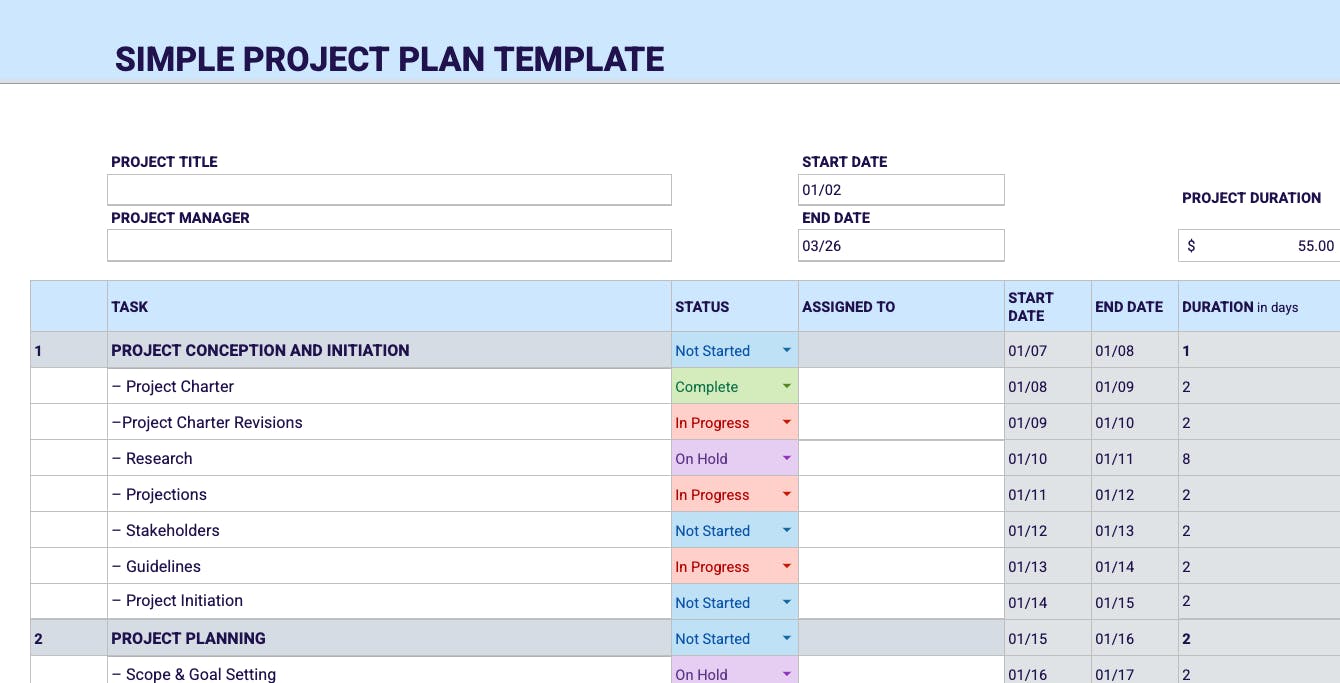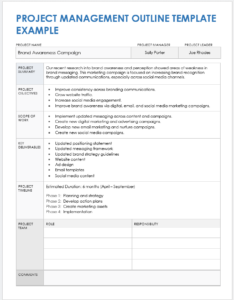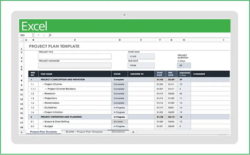Utilizing such a framework facilitates better communication among stakeholders, reduces the likelihood of overlooking critical aspects, and ultimately increases the probability of project success. A well-defined plan saves time and resources by preventing misunderstandings and minimizing the need for rework later in the project lifecycle. It also provides a baseline against which progress can be tracked and measured.

This structured approach to planning is applicable to diverse projects, from small-scale initiatives to complex endeavors. The following sections will explore specific components often included within these frameworks, offering practical guidance on their effective utilization.
Key Components of a Project Planning Framework
Effective project plans typically incorporate several key components to ensure comprehensive coverage of all crucial aspects. These components provide a structured approach to defining the project scope, allocating resources, and managing potential risks.
1. Project Goals and Objectives: Clearly defined goals and objectives establish the overall purpose of the project and provide a measurable target for success. Specificity is crucial to avoid ambiguity and ensure all stakeholders share a common understanding of the desired outcomes.
2. Scope Definition: Precisely outlining the boundaries of the project is essential to prevent scope creep and maintain focus on the core deliverables. This includes specifying what is included and, equally importantly, what is excluded from the project.
3. Task Breakdown and Sequencing: Deconstructing the project into smaller, manageable tasks facilitates accurate estimation of effort and resource allocation. Defining the logical sequence of these tasks establishes dependencies and informs scheduling.
4. Timeline and Milestones: Establishing a realistic timeline with clearly defined milestones provides a roadmap for progress tracking and allows for timely identification of potential delays. This component is crucial for effective time management and stakeholder communication.
5. Resource Allocation: Identifying and allocating the necessary resources, including personnel, budget, and materials, is essential for successful project execution. Accurate resource planning ensures that the project has the necessary support to achieve its objectives.
6. Risk Management: Proactively identifying and assessing potential risks allows for the development of mitigation strategies and contingency plans. Effective risk management minimizes disruptions and increases the likelihood of project success.
7. Communication Plan: Establishing a clear communication plan facilitates effective information flow among stakeholders. This includes defining communication channels, frequency, and responsible parties.
These components work together to provide a comprehensive and structured approach to project planning, facilitating effective execution, monitoring, and ultimately, successful project delivery. By addressing each of these areas, the framework minimizes potential issues and maximizes the chances of achieving project objectives.
How to Create a Project Planning Framework
Developing a robust project planning framework involves a systematic approach to define essential elements and ensure comprehensive project coverage. This process facilitates clear communication, efficient resource allocation, and effective risk management.
1. Define Project Goals and Objectives: Begin by articulating clear, measurable, achievable, relevant, and time-bound (SMART) goals and objectives. This establishes the project’s purpose and provides a benchmark for success.
2. Outline Scope and Deliverables: Precisely define the project’s boundaries, including specific deliverables and exclusions. This clarity minimizes scope creep and ensures focused efforts.
3. Develop a Work Breakdown Structure (WBS): Decompose the project into smaller, manageable tasks, creating a hierarchical structure that facilitates task assignment and progress tracking.
4. Establish a Timeline and Milestones: Create a realistic schedule with key milestones, outlining task dependencies and durations. This allows for effective time management and progress monitoring.
5. Allocate Resources: Identify and assign necessary resources, including personnel, budget, and materials, ensuring adequate support for each task and phase.
6. Identify and Assess Risks: Conduct a thorough risk assessment to identify potential challenges and develop mitigation strategies. This proactive approach minimizes disruptions and enhances project resilience.
7. Develop a Communication Plan: Establish clear communication channels, frequency, and responsibilities to ensure effective information flow among stakeholders.
8. Document the Framework: Consolidate all components into a formal document or template. This provides a standardized approach for future projects and promotes consistency across initiatives.
A well-defined framework guides projects toward successful completion by providing structure, promoting clear communication, and enabling proactive risk management. This systematic approach improves efficiency, minimizes potential issues, and ultimately increases the likelihood of achieving project objectives.
A robust project planning guide template provides an invaluable framework for navigating the complexities of project management. It offers a standardized approach to defining scope, allocating resources, managing risks, and ensuring effective communication, thereby increasing the likelihood of successful project outcomes. Utilizing such a template fosters clarity, consistency, and proactive planning, reducing the potential for delays, cost overruns, and misunderstandings.
Effective project management hinges on meticulous planning. Adopting a structured approach through a comprehensive template empowers organizations to execute projects efficiently and achieve strategic objectives. The diligent application of these principles contributes significantly to overall organizational success and fosters a culture of proactive and results-oriented project delivery.



